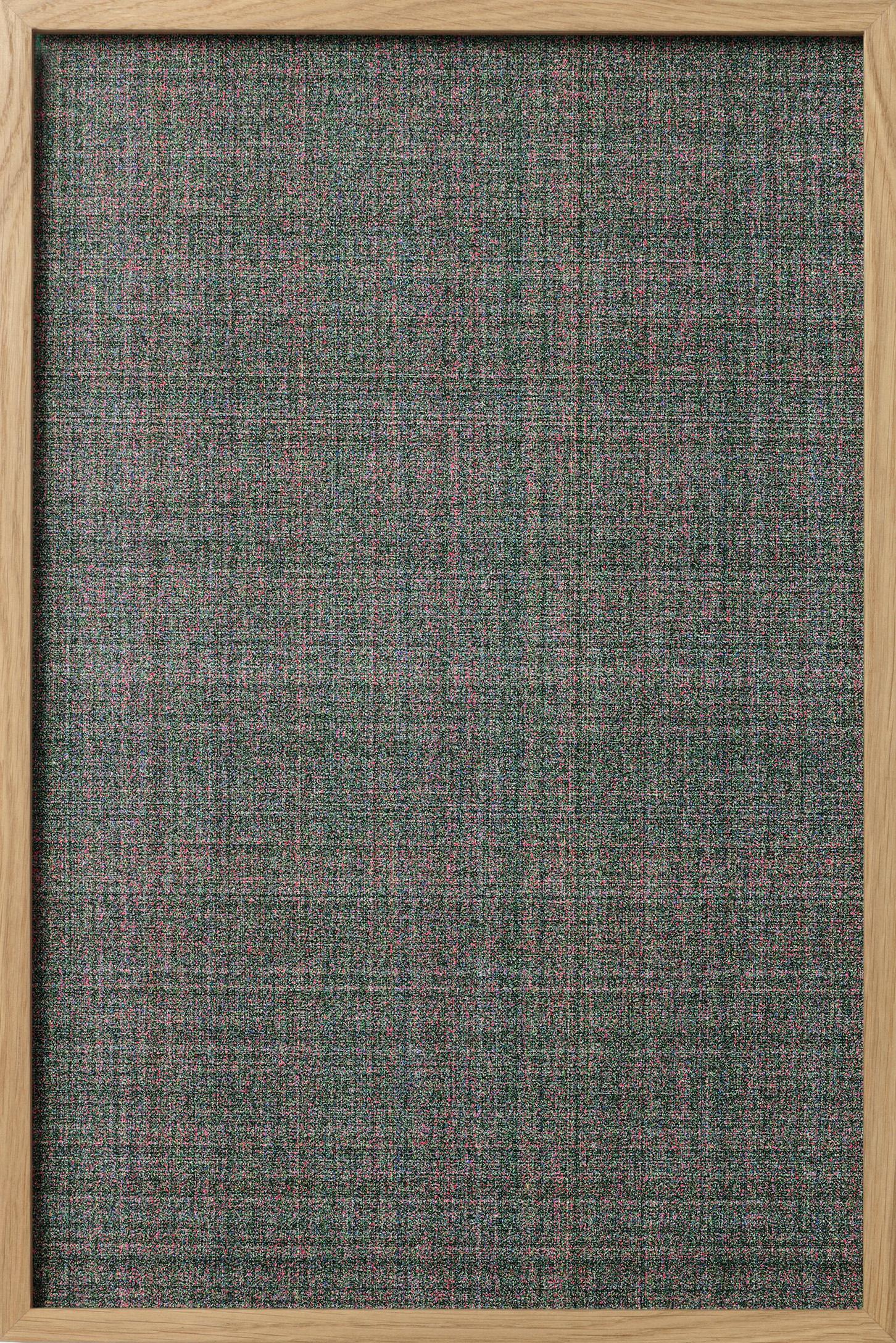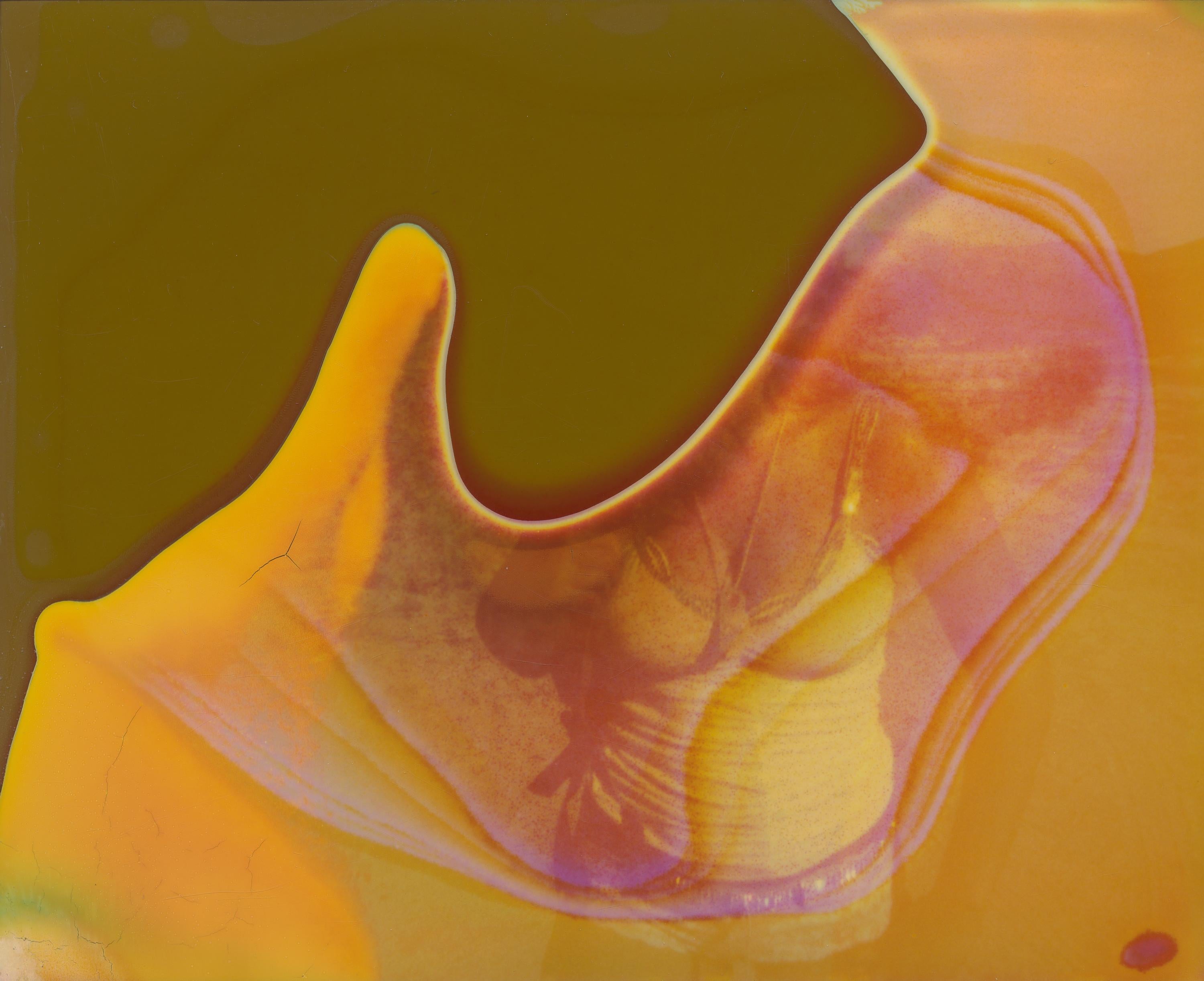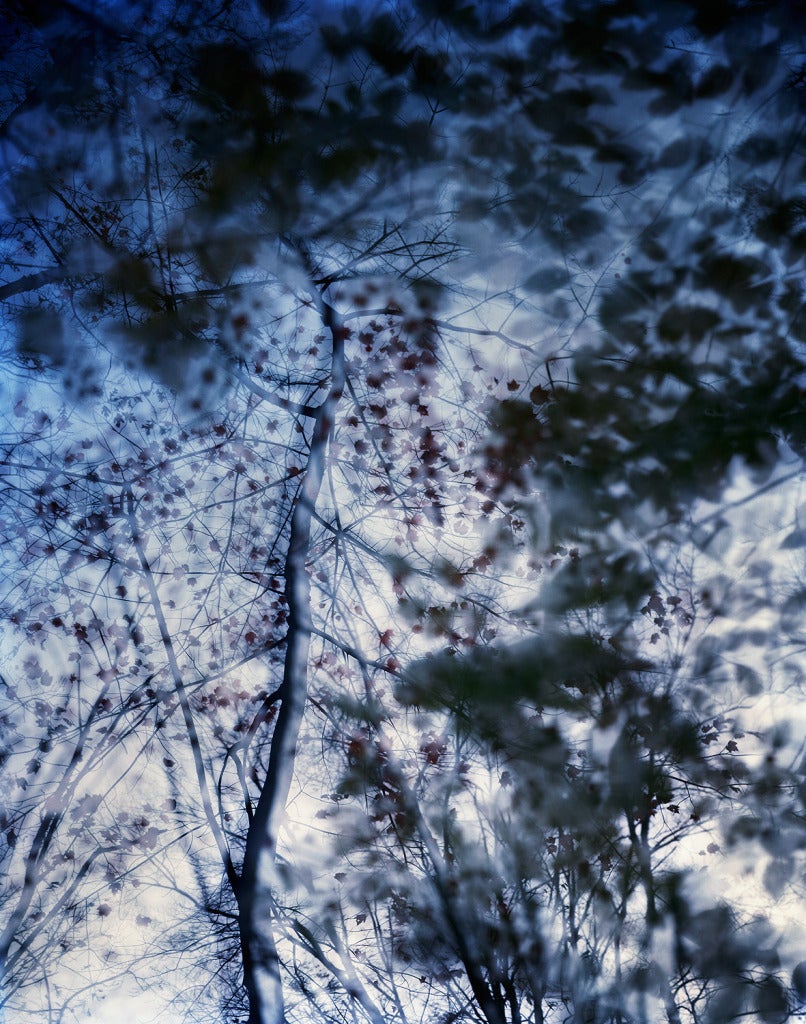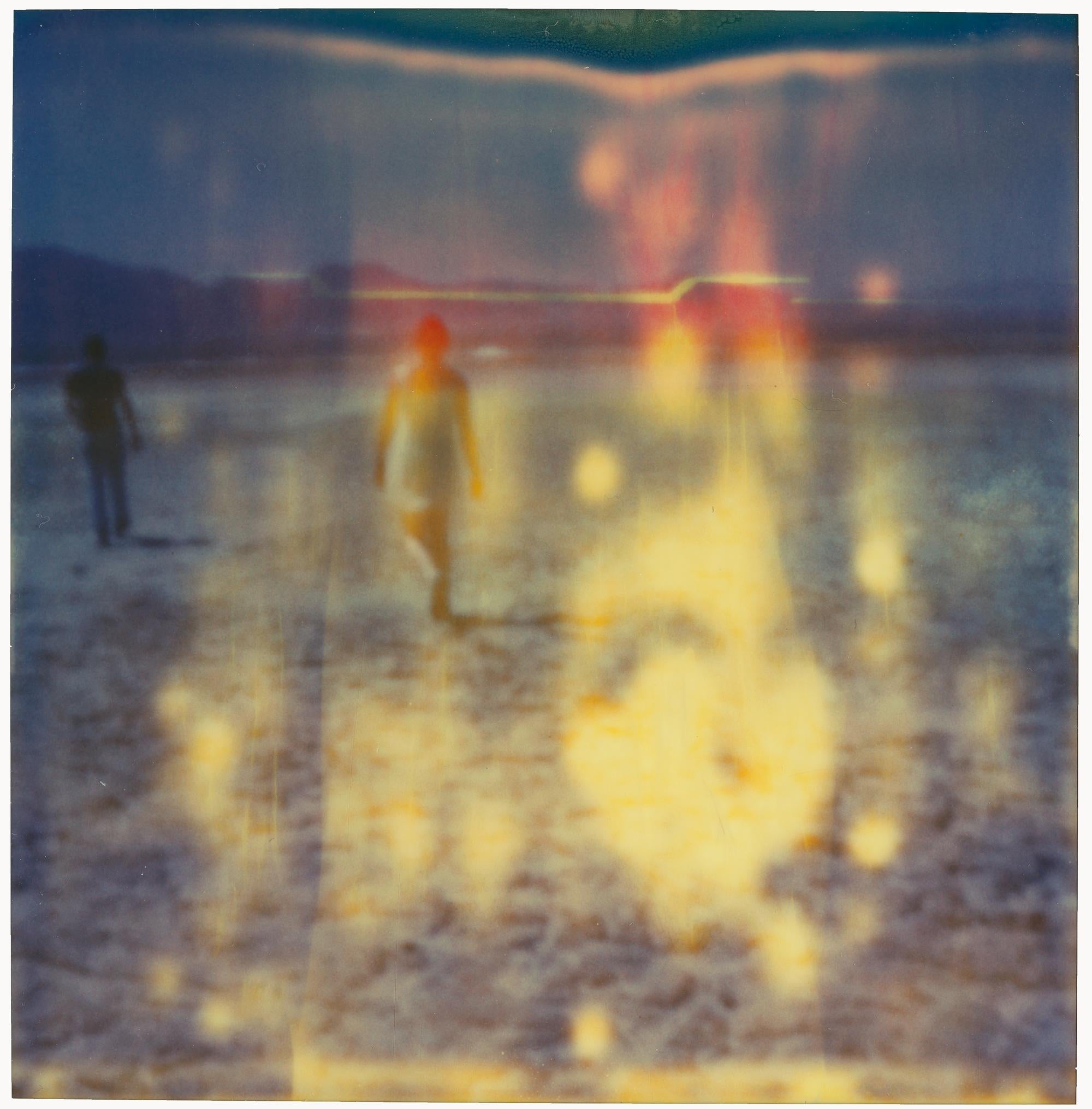Items Similar to Candida Höfer, Teatro Nacional de Sao Carlos Lisboa III - Signed Photograph
Want more images or videos?
Request additional images or videos from the seller
1 of 5
Candida HoferCandida Höfer, Teatro Nacional de Sao Carlos Lisboa III - Signed Photograph2009
2009
About the Item
Candida Höfer (German, b. 1944)
Teatro Nacional de Sao Carlos Lisboa III, 2009
Medium: C Print
Dimensions: 28 x 22.5 cm (11.0 x 8.9 in)
Edition of 100: Hand-signed and numbered
Condition: Excellent
- Creator:Candida Hofer (1944, German)
- Creation Year:2009
- Dimensions:Height: 11.03 in (28 cm)Width: 8.86 in (22.5 cm)
- Medium:
- Movement & Style:
- Period:
- Condition:
- Gallery Location:Hamburg, DE
- Reference Number:1stDibs: LU704313858492
Candida Hofer
Born 1944, Eberswalde, Germany; lives in Cologne, Germany. Candida Höfer is particularly well-known for her technical perfection and conceptual approach to her art. She produces large-format color photographs of architectural interiors that double as systematic visual studies of social and public spaces, devoid of human presence. Her works chronicle the physiology of social architecture and are noted for their subtle allusions to human activity. Höfer is meticulous in her practice and is determined to do “justice” to the places she photographs; throughout her career she has photographed spectacular cultural spaces including libraries, museums, theaters, universities, as well as historic houses and palaces. Candida Höfer has exhibited widely in her native Germany and abroad, in museums such as Kunstsammlung Nordrhein Westfalen in Dusseldorf; Museum Ludwig in Cologne; Newport Harbor Art Museum in Newport Beach, California; Museum of Contemporary Art in Sydney, Australia and the Saint Louis Art Museum in Saint Louis, Missouri, to name a few. Her photographs are found in public and private collections throughout the world, including the Bibliothëque Nationale de France, Paris; Museum of Modern Art, New York, and San Francisco Museum of Modern Art, among others.

About the Seller
5.0
Vetted Seller
These experienced sellers undergo a comprehensive evaluation by our team of in-house experts.
Established in 2017
1stDibs seller since 2017
166 sales on 1stDibs
Typical response time: 14 hours
- ShippingRetrieving quote...Ships From: Hamburg, Germany
- Return PolicyA return for this item may be initiated within 14 days of delivery.
More From This SellerView All
- Candida Höfer, Colored Wood: Signed Photograph, Abstract PhotographyBy Candida HoferLocated in Hamburg, DECandida Höfer (German, born 1944) Colored Wood, 2017 Medium: C-Print Dimensions: 56 × 57.7 cm (22 × 22 7/10 in) Edition of 100: Hand-signed and numbered on verso Condtion: MintCategory
21st Century and Contemporary Abstract Color Photography
MaterialsC Print
- Hilary Lloyd, Shopfront - Signed Print, Contemporary PhotographyLocated in Hamburg, DEHilary Lloyd (British, b. 1964) Shopfront, 1999 Medium: Offset lithograph on card stock Dimensions: 21 x 26 cm Edition of 100: Hand-signed, numbered and dated Condition: ExcellentCategory
20th Century Contemporary Abstract Photography
MaterialsOffset
- William Eggleston, Untitled (Mayfield, Kentucky) - Signed Light Box, PhotographyBy William EgglestonLocated in Hamburg, DEWilliam Eggleston (American, born 1939) Untitled (Mayfield, Kentucky), 2002 Medium: Transparency in aluminum light frame with electrical fittings (light box) Dimensions: 45.8 x 60.4 ...Category
21st Century and Contemporary Abstract Abstract Photography
MaterialsDigital
- Gerhard Richter, Zaun: Hand-signed Color Photograph, in Artist's FrameBy Gerhard RichterLocated in Hamburg, DEGerhard Richter (German, b. 1932) Zaun, 2010 Medium: Colour photograph, mounted on white cardboard, in artist’s frame Print dimensions: 15 x 20 cm Frame dimensions: 23.5 x 28.5 cm Ed...Category
21st Century and Contemporary Abstract Color Photography
MaterialsPhotographic Film
- Yinka Shonibare, Dreamscape (for Documenta 11) - Contemporary Art, Signed PrintBy Yinka ShonibareLocated in Hamburg, DEYinka Shonibare CBE, (b. 1962) Dreamscape (for Documenta 11), 2002 Medium: Chromogenic photograph Dimensions: 40.5 x 60 cm (16 x 23.5 in) Edition of 40: Hand-signed and numberedCategory
21st Century and Contemporary Contemporary Abstract Photography
MaterialsC Print
- Candida Höfer, Teatro Degollado Guadalajara III, Contemporary Photograph, SignedBy Candida HoferLocated in Hamburg, DECandida Höfer (German, b. 1944) Teatro Degollado Guadalajara III, 2015 Medium: C-Print Dimensions: 30 × 39.2 cm (38 x 47 cm) Edition of 100: Hand signed on label, verso Condition: Ex...Category
21st Century and Contemporary Contemporary Abstract Photography
MaterialsC Print
You May Also Like
- "Zero" CANON 5DMarkII - Abstract Color PhotographyBy Ulrike KönigshoferLocated in Wien, WienUlrike Königshofer “Zero” (Canon 5DMarkII) 2021 Pigment print, framed 47 x 31 cm Ed. 5+1 AP On Ulrike Königshofer´s series "Zero": Completely without light, photographs were taken w...Category
21st Century and Contemporary Contemporary Color Photography
MaterialsC Print
- Turro Tram Depot, Milan - Abstract Italian color photographyBy Richard HeepsLocated in Cambridge, GBTurro Tram Depot, Italian street photograph from Richard Heeps series A Short History of Milan. Richard Heeps series A Short History of Milan began as a special project for the 2018...Category
2010s Contemporary Color Photography
MaterialsPhotographic Paper, C Print, Color, Silver Gelatin
- Living in a Dream (Till Death do us Part) - Contemporary, Polaroid, WomenBy Stefanie SchneiderLocated in Morongo Valley, CALiving in a Dream (Till Death do us Part) - 2005 20x20cm, Edition of 10, Archival C-Print print, based on the Polaroid. Certificate and Signature label, artist Inventory No. 9781. Not mounted. on offer is a piece from the movie "Till Death do us Part" Stefanie Schneider’s Till Death Do Us Part or “There is Only the Desert for You.” BY DREW HAMMOND Stefanie Schneider’s Til Death to Us Part is a love narrative that comprises three elements: 1. A montage of still images shot and elaborated by means of her signature technique of using Polaroid formats with outdated and degraded film stock in natural light, with the resulting im ages rephotographed (by other means) enlarged and printed in such a way as to generate further distortions of the image. 2. Dated Super 8 film footage without a sound track and developed by the artist. 3. Recorded off-screen narration of texts written by the actors or photographic subjects, and selected by the artist. At the outset, this method presupposes a tension between still and moving image; between the conventions about the juxtaposition of such images in a moving image presentation; and, and a further tension between the work’s juxtaposition of sound and image, and the conventional relationship between sound and image that occurs in the majority of films. But Till Death Do Us Part also conduces to an implied synthesis of still and moving image by the manner in which the artist edits or cuts the work. First, she imposes a rigorous criterion of selection, whether to render a section as a still or moving image. The predominance of still images is neither an arbitrary residue of her background as a still photographer—in fact she has years of background in film projects; nor is it a capricious reaction against moving picture convention that demands more moving images than stills. Instead, the number of still images has a direct thematic relation to the fabric of the love story in the following sense. Stills, by definition, have a very different relationship to time than do moving images. The unedited moving shot occurs in real time, and the edited moving shot, despite its artificial rendering of time, all too 2009often affords the viewer an even greater illusion of experiencing reality as it unfolds. It is self-evident that moving images overtly mimic the temporal dynamic of reality. Frozen in time—at least overtly—still photographic images pose a radical tension with real time. This tension is all the more heightened by their “real” content, by the recording aspect of their constitution. But precisely because they seem to suspend time, they more naturally evoke a sense of the past and of its inherent nostalgia. In this way, they are often more readily evocative of other states of experience of the real, if we properly include in the real our own experience of the past through memory, and its inherent emotions. This attribute of stills is the real criterion of their selection in Til Death Do Us Part where consistently, the artist associates them with desire, dream, memory, passion, and the ensemble of mental states that accompany a love relationship in its nascent, mature, and declining aspects. A SYNTHESIS OF MOVING AND STILL IMAGES BOTH FORMAL AND CONCEPTUAL It is noteworthy that, after a transition from a still image to a moving image, as soon as the viewer expects the movement to continue, there is a “logical” cut that we expect to result in another moving image, not only because of its mise en scène, but also because of its implicit respect of traditional rules of film editing, its planarity, its sight line, its treatment of 3D space—all these lead us to expect that the successive shot, as it is revealed, is bound to be another moving image. But contrary to our expectation, and in delayed reaction, we are startled to find that it is another still image. One effect of this technique is to reinforce the tension between still and moving image by means of surprise. But in another sense, the technique reminds us that, in film, the moving image is also a succession of stills that only generate an illusion of movement. Although it is a fact that here the artist employs Super 8 footage, in principle, even were the moving images shot with video, the fact would remain since video images are all reducible to a series of discrete still images no matter how “seamless” the transitions between them. Yet a third effect of the technique has to do with its temporal implication. Often art aspires to conflate or otherwise distort time. Here, instead, the juxtaposition poses a tension between two times: the “real time” of the moving image that is by definition associated with reality in its temporal aspect; and the “frozen time” of the still image associated with an altered sense of time in memory and fantasy of the object of desire—not to mention the unreal time of the sense of the monopolization of the gaze conventionally attributed to the photographic medium, but which here is associated as much with the yearning narrator as it is with the viewer. In this way, the work establishes and juxtaposes two times for two levels of consciousness, both for the narrator of the story and, implicitly, for the viewer: A) the immediate experience of reality, and B) the background of reflective effects of reality, such as dream, memory, fantasy, and their inherent compounding of past and present emotions. In addition, the piece advances in the direction of a Gesammtkunstwerk, but in a way that reconsiders this synaesthesia as a unified complex of genres—not only because it uses new media that did not exist when the idea was first enunciated in Wagner’s time, but also because it comprises elements that are not entirely of one artist’s making, but which are subsumed by the work overall. The totality remains the vision of one artist. In this sense, Till Death Do Us Part reveals a further tension between the central intelligence of the artist and the products of other individual participants. This tension is compounded to the degree that the characters’ attributes and narrated statements are part fiction and part reality, part themselves, and part their characters. But Stefanie Schneider is the one who assembles, organizes, and selects them all. THE RELATIONSHIP BETWEEN THIS IDEA (above) AND PHOTOGRAPHY This selective aspect of the work is an expansion of idea of the act of photography in which the artistic photographer selects that which is already there, and then, by distortion, definition or delimitation, compositional and lighting emphasis, and by a host of other techniques, subsumes that which is already there to transform it into an image of the artist’s contrivance, one that is no less of the artist’s making than a work in any other medium, but which is distinct from many traditional media (such as painting) in that it retains an evocation of the tension between what is already there and what is of the artist’s making. Should it fail to achieve this, it remains, to that degree, mere illustration to which aesthetic technique has been applied with greater or lesser skill. The way Til Death Do Us Part expands this basic principle of the photographic act, is to apply it to further existing elements, and, similarly, to transform them. These additional existing elements include written or improvised pieces narrated by their authors in a way that shifts between their own identities and the identities of fictional characters. Such characters derive partially from their own identities by making use of real or imagined memories, dreams, fears of the future, genuine impressions, and emotional responses to unexpected or even banal events. There is also music, with voice and instrumental accompaniment. The music slips between integration with the narrative voices and disjunction, between consistency and tension. At times it would direct the mood, and at other times it would disrupt. Despite that much of this material is made by others, it becomes, like the reality that is the raw material of an art photo, subsumed and transformed by the overall aesthetic act of the manner of its selection, distortion, organization, duration, and emotional effect. * * * David Lean was fond of saying that a love story is most effective in a squalid visual environment. In Til Death Do Us Part, the squalor of the American desert...Category
Early 2000s Contemporary Color Photography
MaterialsArchival Paper, Photographic Paper, C Print, Color, Polaroid
- lovely, dark and deep #28By Carolyn MonastraLocated in New York, NYEdition 1 of 5 Carolyn Monastra's series "Lovely, Dark and Deep,” excerpted from Robert Frost poem, explores the natural wonders of the wilderness. Dramatic and awe-inspiring landsc...Category
Early 2000s Contemporary Color Photography
MaterialsC Print
- Day for Night - Planet of the Apes 01 - 21st Century, Polaroid, AbstractBy Stefanie SchneiderLocated in Morongo Valley, CADay for Night - Planet of the Apes 01 - 1999 58x56cm, Edition of 10 plus 2 Artist Proofs. Analog C-Print, hand-printed by the artist, based on the original Polaroid. Signature lab...Category
1990s Contemporary Color Photography
MaterialsArchival Paper, Photographic Paper, C Print, Color, Polaroid
- The Argument (Till Death do us Part) - Contemporary, PolaroidBy Stefanie SchneiderLocated in Morongo Valley, CAThe Argument (Till Death do us Part) - 2007 60x50cm, Edition of 10 plus 2 Artist Proofs. Archival C-Print, based on the original Polaroid. Certificate and Signature label. Arti...Category
Early 2000s Contemporary Abstract Photography
MaterialsPolaroid, Color, C Print, Photographic Paper, Archival Paper






